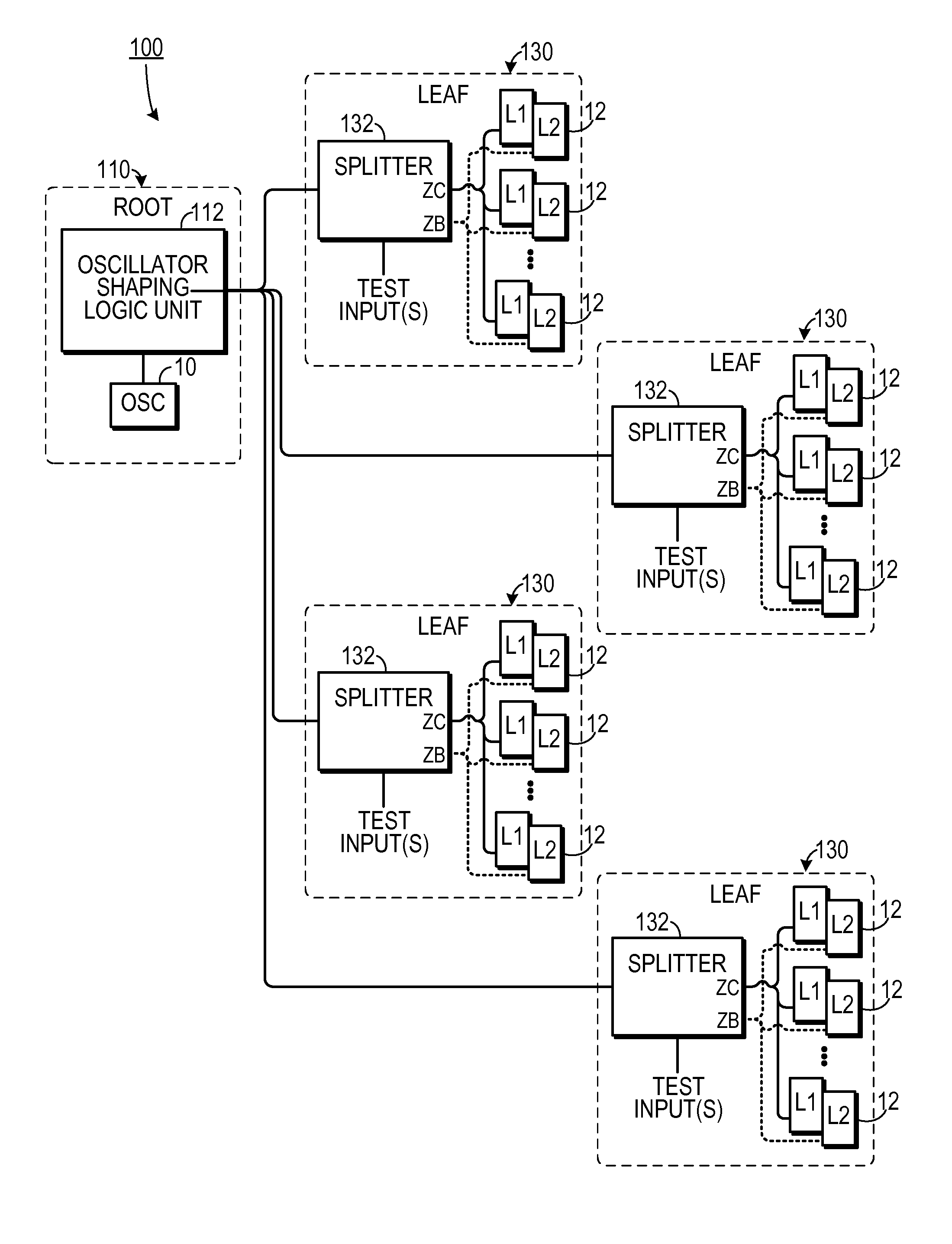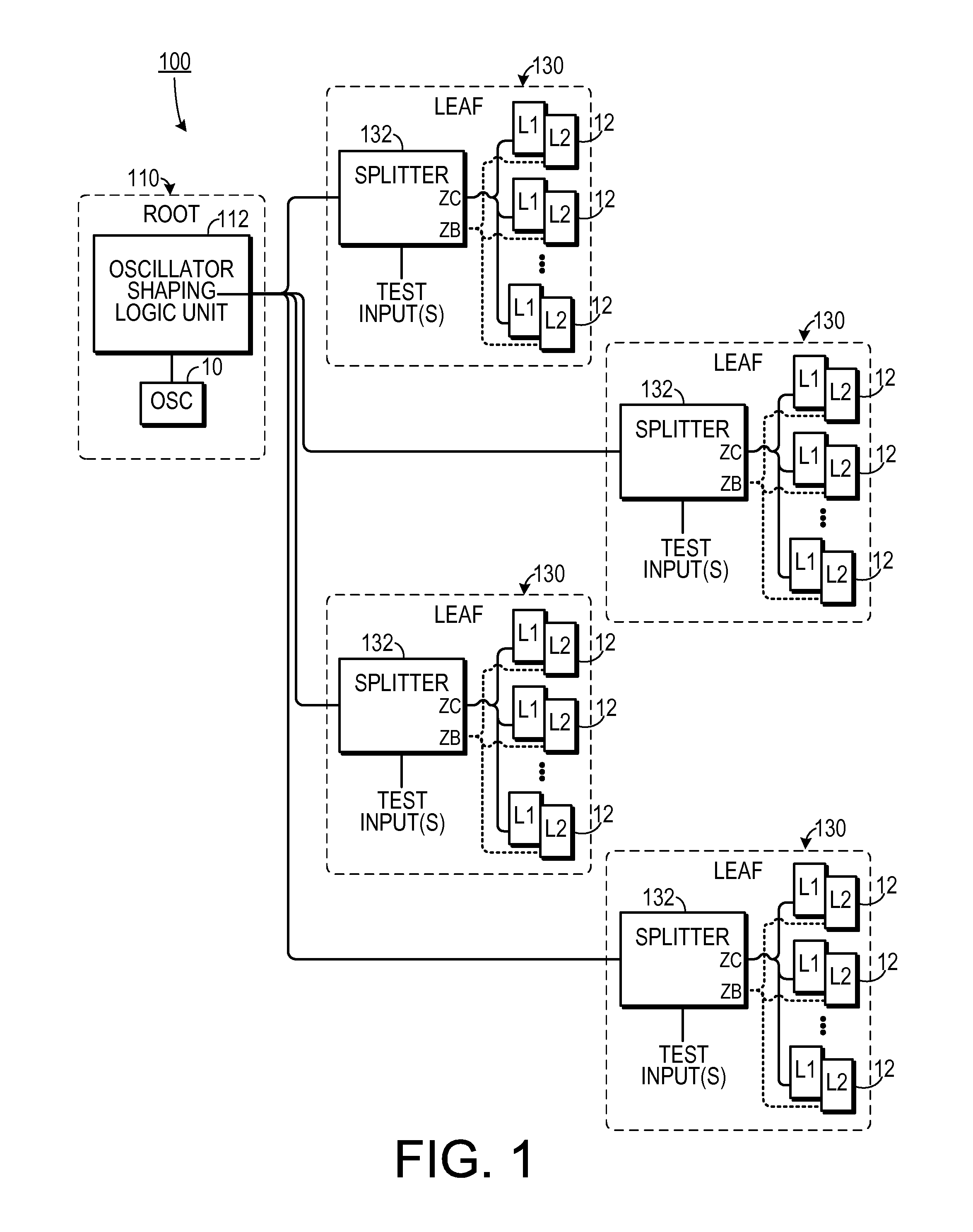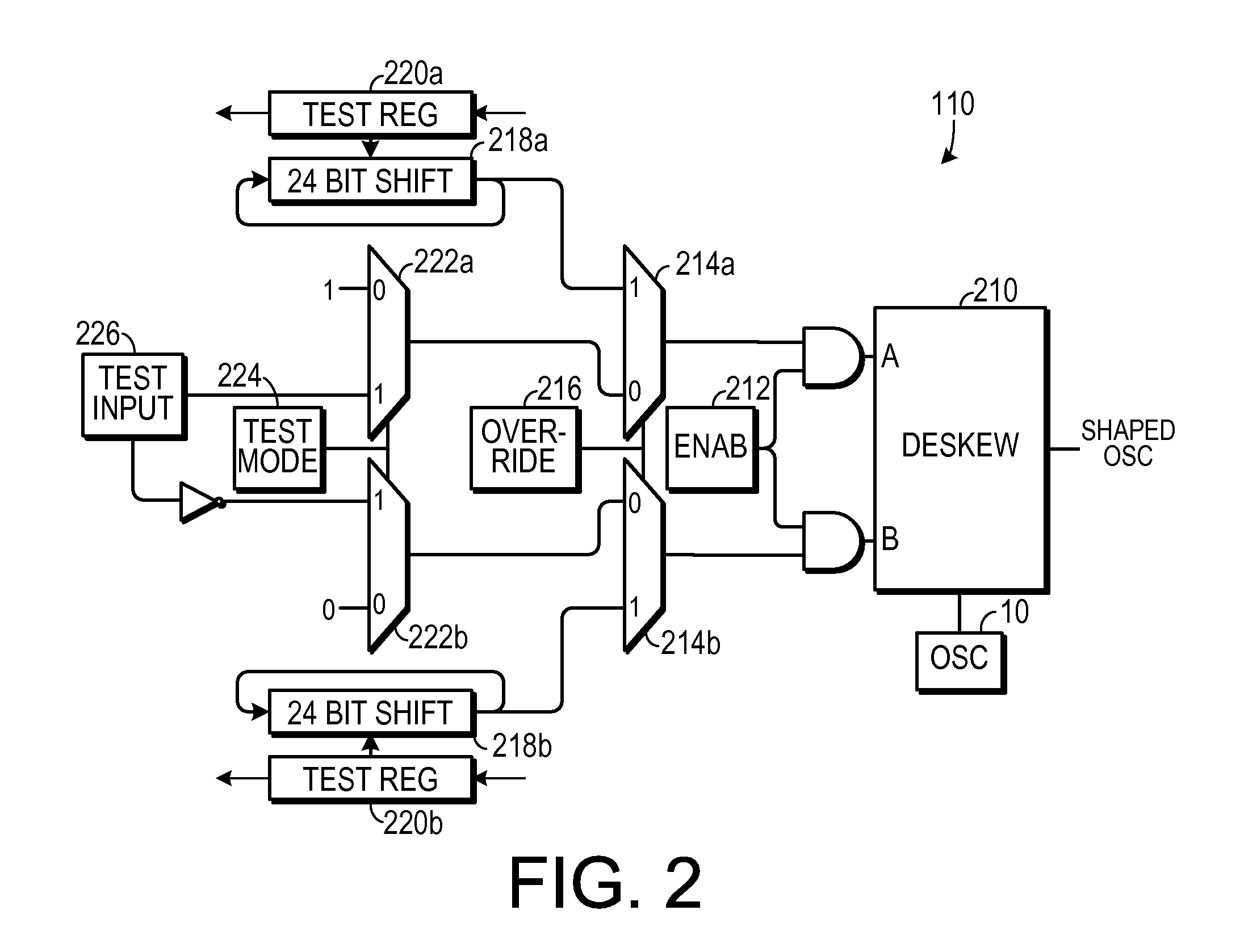Self-test design methodology and technique for root-gated clocking structure
- Summary
- Abstract
- Description
- Claims
- Application Information
AI Technical Summary
Benefits of technology
Problems solved by technology
Method used
Image
Examples
Embodiment Construction
[0028]A preferred embodiment of the invention is now described in detail. Referring to the drawings, like numbers indicate like parts throughout the views. As used in the description herein and throughout the claims, the following terms take the meanings explicitly associated herein, unless the context clearly dictates otherwise: the meaning of “a,”“an,” and “the” includes plural reference, the meaning of “in” includes “in” and “on.”
[0029]As shown in FIG. 1, one embodiment employs a root oscillation signal shaping logic circuit 110 that is employed on an integrated circuit, such as a processor. The root oscillation signal shaping logic circuit 110 includes an oscillator 10 that asserts a clock signal and an oscillator shaping logic unit 112 that generates and transmits a shaped oscillator clock signal to a plurality of clock splitter waveform generators 130, also referred to herein as “splitter leaves.” Each splitter leaf 130 includes a clock splitter 132 that generates latch clock ...
PUM
 Login to view more
Login to view more Abstract
Description
Claims
Application Information
 Login to view more
Login to view more - R&D Engineer
- R&D Manager
- IP Professional
- Industry Leading Data Capabilities
- Powerful AI technology
- Patent DNA Extraction
Browse by: Latest US Patents, China's latest patents, Technical Efficacy Thesaurus, Application Domain, Technology Topic.
© 2024 PatSnap. All rights reserved.Legal|Privacy policy|Modern Slavery Act Transparency Statement|Sitemap



